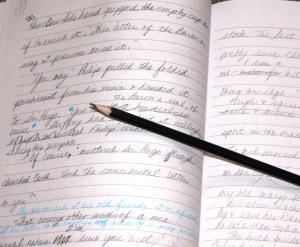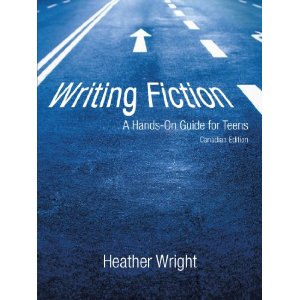 Some wonderful books have been written by writers about writing and here are a few standbys that I wouldn’t be without.
Some wonderful books have been written by writers about writing and here are a few standbys that I wouldn’t be without.
If you don’t already have it, make sure you own a copy of Strunk and White’s Elements of Style. This little book is a concise guide to clear, uncluttered prose. According to Stephen King, “Strunk and White offer the best tools (and the best rules) you could hope for, describing them simply and clearly.”
And that leads me to Stephen King. His book, On Writing: A memoir of the craft is a funny, moving, and unromantic look at his childhood, early struggles to get published, decline into and recovery from drug and alcohol abuse, and surviving a nearly-deadly collision with a van. Aside from King’s colourful insights into writing and his writing life, it is hard to find a more succinct description of the necessary techniques of the writer’s craft than in the section of this book titled “Toolbox.” You have to love a writer who declares, “Writing is magic, as much the water of life as any other creative art. The water is free. So drink. Drink and be filled up.”
Another favourite of mine is Anne Lamott’s Bird by Bird: Some Instructions on Writing and Life. Combining autobiography with writing advice, this book reaches the reader with a brilliant combination of serious advice, laugh-out-loud humour, and inspiration. One of Lamott’s writing tools is always at my desk—the one-inch picture frame. Lamott says, “It reminds me that all I have to do is to write down as much as I can see through a one-inch picture frame. This is all I have to bite off for the time being.” When a project of mine becomes overwhelming (and sometimes this can be daily), that picture frame gives me the freedom to write just a little bit. I can deal with that. I know I will write another bit and another–and finish the project. Ask Lamott why writing matters and she will reply, “Because of the spirit. . . .Because of the heart. Writing and reading decrease our sense of isolation. They deepen and widen and expand our sense of life: they feed the soul.” Anne Lamott’s book will feed your writer’s soul.
Both the Lamott and the King books are sprinkled with some fairly ‘colourful’ language and, if you will find that uncomfortable reading, then here is one more great inspiration. Writing down the Bones by Natalie Goldberg is a book you will want to read with a highlighter in your hand because it is so rich in ‘just right’ statements about writing. Here’s a sample: “Writing…is ninety percent listening. You listen so deeply to the space around you that it fills you and when you write it pours out of you. If you can capture that reality around you, your writing needs nothing else.” Wow.
Of course reading about writing has its place, but the most important thing is the writing. Here are some writing starters from another favourite book of mine, The Pocket Muse: ideas and inspirations for writing by Monica Wood. Full of photographs, quotes, writing tips and ideas, it’s a book I like to open when I need a creative push. Here are a few of her writing starters:
- “Fill in the blank and then keep going: Until _______________, nothing notable had happened in the town of Madison since the year of its founding.”
- “Write about a person who wins something she doesn’t want.”
- “Today’s Horoscope: Somebody close to you will tell your secret.”
- “Write about trouble resulting from a good deed.”
- “Write a scene in which the dramatic tension revolves around a misspelling: a road sign, the name on a birthday cake, the directions to a doctor’s office, a word in a spelling bee.”
Sometimes it’s hard to face the empty page or blank screen. Wood has this advice for people reluctant to start a writing project: “Nobody has to see that first draft but you. You can eat it when you’re done. You can make it into origami animals and decorate a table. You can dunk it in hot water, stir it up, mash it back into pulp. You can build a fire, line a birdcage, stuff a pillow. You can’t do any of this, however, until you write the thing.” For me, that says it all.
I have one other favourite book, No Plot? No Problem!: A High-velocity, Low-stress Way to Write a Novel in 30 Days by Chris Baty. I’ll write more about that closer to NaNoWriMo time.
Do you have a favourite book that you turn to time and again? I’d love to know what it is and why it is so special to you. Please add a comment and share it with me and my readers.
Links:
Monica Wood – http://www.monicawood.com/tips.html
Natalie Goldberg – http://www.nataliegoldberg.com/
Stephen King – http://www.stephenking.com/index.html
Anne Lamott – http://www.barclayagency.com/lamott.html
Elements of Style – http://www.amazon.com/Elements-Style-Fourth-William-Strunk/dp/020530902X
Like this:
Like Loading...
 Well, the day has finally come and Writing Fiction: A Guide for Pre-Teens is available at Amazon and CreateSpace. Yay! The Kindle version should be up in a day or two, and in a few weeks, it should be available on Kobo and at other on-line retailers. A labour of love, this book has kept me inspired and busy for the past several weeks, tweaking and adding final touches. The cover photo may still change, but for now I’m breathing a huge sigh of relief. You can take a peek at the Table of Contents below.
Well, the day has finally come and Writing Fiction: A Guide for Pre-Teens is available at Amazon and CreateSpace. Yay! The Kindle version should be up in a day or two, and in a few weeks, it should be available on Kobo and at other on-line retailers. A labour of love, this book has kept me inspired and busy for the past several weeks, tweaking and adding final touches. The cover photo may still change, but for now I’m breathing a huge sigh of relief. You can take a peek at the Table of Contents below.


